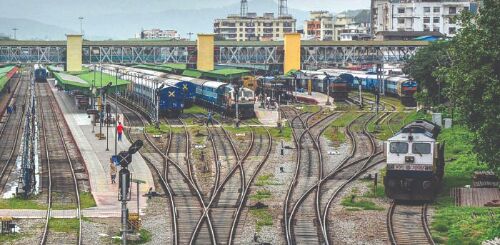'Railways currently operating more than 900 Mail trains of pre-Covid period'

New Delhi: Indian Railways is currently operating more than 900 Express or Mail trains of the pre-COVID period, the CEO of rail board Vinod Kumar Yadav confirmed on Tuesday.
Ministry data says, 100 per cent occupancy recorded for 416 mail trains, 50 to 100 per cent occupancy for 400 mail trains, less than 50 per cent occupancy for 40 mail trains and 16 other such trains recorded with even lesser occupancy till November end.
At the same time, the rail board chief also confirmed that there will be no normalcy in passenger train service soon unless the pandemic situation gets normalise. The ministry has asked all the General Managers of its respective Zones to communicate with the respective state governments regarding the passenger service demand.
Indian Railways operated a total of 908 special trains, 566 festive special trains during this ongoing pandemic crisis situation and 238 services of Kolkata metro from July till November 30. Further, 2773 Mumbai suburban service and 843 Kolkata suburban services operated till now.
Indian Railways wll bring a private investment of Rs 30,000 crore in running passenger trains, introducing 152 pairs of train services. These trains with modern technology will improve the travel experience, Yadav informed media persons.
Highlighting the freight loading services, the national transporter also recorded a jump in its services. Despite the festivals and natural calamity in November, Indian Railways managed to reach the milestone of 4 million ton of freight loading per day in the last four days of the month.
Yadav also said that Railways' new "zero-based timetable", once introduced, will cut down travel time in long distance trains between 30 minutes and six hours on an average.
The timetable, to be introduced by the national transporter once the coronavirus situation stabilises, works on the premise that the existence of every train and stop must be justified based on goals of providing transportation with optimum and efficient utilisation of the available resources.
"The idea is to increase the occupancy of poorly-patronised trains and to reduce waitlisting in those trains which are in high demand. Once the timetable is operational, the journey time of long distance trains will be reduced between half an hour and six hours on an average. Under this timetable the speeds of trains will also increase," Yadav said.



